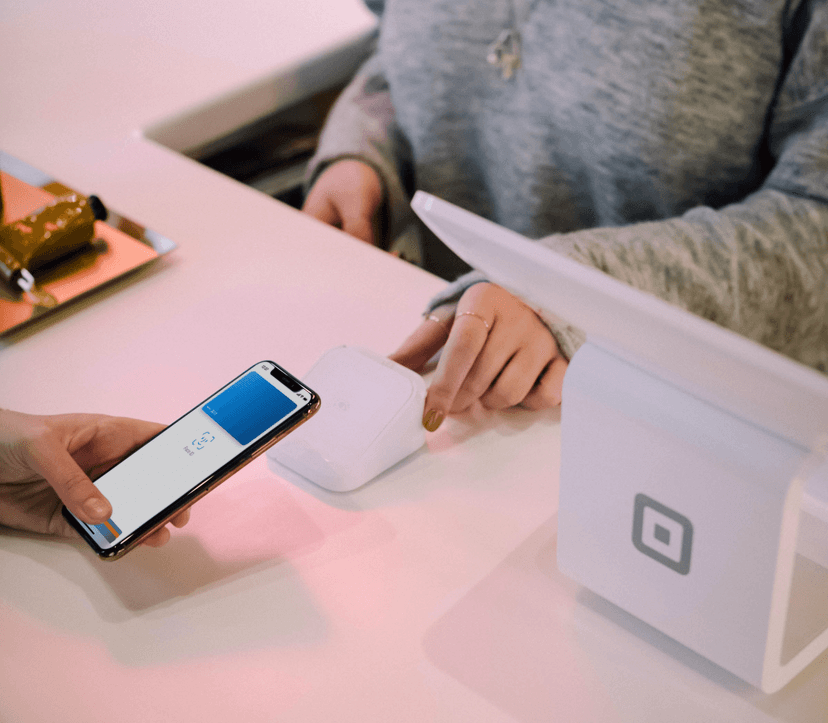Understanding 'Tap to Connect'
As the digital landscape continues to evolve, businesses are continually seeking innovative ways to deliver seamless experiences to users. One such innovation is the 'Tap to Connect' feature, which has revolutionised how users interact with digital interfaces. 'Tap to Connect' is a simple yet powerful technology that enables users to connect with a service or device with a single tap. No more complex setups, no need for technical expertise; tap, and you're connected.
The 'Tap to Connect' feature is a culmination of the efforts to make technology more user-friendly and accessible. It's designed to remove the barriers that often deter users from fully utilising a product or service. With a single tap, users can unlock a world of functionality that would otherwise require multiple steps and interactions.
In essence, 'Tap to Connect' is about reducing friction. It's about making things as simple as possible for the user. This feature is more than just a convenience. It's a demonstration of how technology can and should be designed to serve the user, not the other way around.
The Significance of 'Tap to Connect' for User Engagement
User engagement is a critical metric for any digital platform. It reflects how well a product or service resonates with its audience. The 'Tap to Connect' feature has proven to be a significant tool for boosting engagement. Its simplicity and convenience make it a natural fit for users, who often prefer solutions that save them time and effort.
'Tap to Connect' isn't just a feature; it's a philosophy. It represents a shift in design thinking, where the focus is on creating a user-centric experience. This philosophy resonates with users, who appreciate being valued and understood. When users feel that a product or service is designed with their needs in mind, they're more likely to engage with it.
The 'Tap to Connect' feature is a powerful engagement tool because it empowers users. It puts control back in their hands and allows them to navigate the digital space with ease. As a result, they're more likely to use a service or device more frequently and for longer periods, boosting overall engagement.
Mechanics of 'Tap to Connect'
The 'Tap to Connect' feature may seem simple on the surface, but it's powered by complex mechanisms behind the scenes. It operates on the principle of Near Field Communication (NFC), a technology that allows two devices to communicate when they are within a short distance of each other. When a user taps their device to another NFC-enabled device, a connection is instantly established.
The 'Tap to Connect' feature uses NFC technology to execute a variety of tasks. These tasks can range from pairing devices to transferring data. The versatility of the 'Tap to Connect' feature is part of what makes it so valuable. With a single tap, users can perform a multitude of functions that would typically require multiple steps.
Although the 'Tap to Connect' feature relies on complex mechanisms, its value proposition is straightforward: making life easier for the user. By streamlining processes and reducing the number of steps required to perform tasks, 'Tap to Connect' enhances user satisfaction and boosts engagement.
Strategies to Optimise 'Tap to Connect' feature
To fully leverage the 'Tap to Connect' feature, it's crucial to implement strategic optimisation measures. The first step is to understand your users' needs and expectations. This understanding will guide the design and implementation of the 'Tap to Connect' feature, ensuring it delivers maximum value.
User testing is a vital part of optimising the 'Tap to Connect' feature. This process involves observing how users interact with the feature and seeking their feedback. User testing can reveal insights into how the 'Tap to Connect' feature can be improved to enhance usability and engagement.
Finally, continual optimisation is key. The digital landscape is always evolving, and so should your 'Tap to Connect' feature. Regular updates and improvements will ensure that the feature remains relevant and continues to deliver value to users.
Insights from Successful 'Tap to Connect' Implementations
There's much to learn from successful 'Tap to Connect' implementations. These success stories demonstrate how this feature can enhance user engagement and drive growth. One key insight is the importance of simplicity. The 'Tap to Connect' feature is most effective when it simplifies processes for users, removing unnecessary steps and reducing friction.
Another insight is the power of user-centric design. Successful 'Tap to Connect' implementations are designed with the user in mind, prioritising their needs and expectations. This approach fosters a sense of value and respect, which in turn boosts engagement.
Lastly, successful 'Tap to Connect' implementations showcase the importance of continual optimisation. By regularly updating and improving the feature, businesses can ensure that it continues to deliver value and meet the evolving needs of users.
Boosting User Engagement with 'Tap to Connect'
The 'Tap to Connect' feature is a potent tool for boosting user engagement. Its simplicity and convenience make it a natural fit for users, who appreciate solutions that save them time and effort. By reducing friction and making processes more streamlined, 'Tap to Connect' encourages users to engage more deeply with a service or device.
One strategy for boosting engagement with 'Tap to Connect' is to integrate it into key user journeys. This integration ensures that the feature becomes a fundamental part of the user experience, enhancing its value and impact.
Another strategy is to promote the 'Tap to Connect' feature through marketing and communications. By highlighting the benefits of the feature, businesses can encourage users to try it out and experience its value firsthand.
Case Studies: 'Tap to Connect' in Action
Numerous case studies demonstrate the effectiveness of the 'Tap to Connect' feature. One such case study is the implementation of 'Tap to Connect' in public transportation systems. By allowing users to tap their devices to pay for their journeys, these systems have simplified the payment process and boosted user engagement.
Another case study is the use of 'Tap to Connect' in retail settings. Many retailers now offer 'Tap to Connect' payment options, enabling customers to make purchases with a single tap. This convenience has enhanced the shopping experience and increased customer engagement.
These case studies illustrate the versatility and impact of the 'Tap to Connect' feature. Whether in transportation, retail, or any other industry, 'Tap to Connect' has the potential to transform user engagement and drive growth.
Measuring Success with 'Tap to Connect'
Measuring the success of the 'Tap to Connect' feature is critical to understanding its impact and value. Key metrics to monitor include usage rates, engagement levels, and user satisfaction.
Usage rates reflect how often users utilise the 'Tap to Connect' feature. A high usage rate indicates that the feature is resonating with users and delivering value. Engagement levels measure the depth of user interaction with the feature. Higher engagement levels suggest that the 'Tap to Connect' feature is successfully capturing users' attention and interest.
User satisfaction is perhaps the most vital metric. It reveals how happy users are with the 'Tap to Connect' feature and its performance. High user satisfaction indicates that the feature is meeting or exceeding user expectations, a critical factor in boosting engagement and fostering loyalty.
Future Trends in 'Tap to Connect' for User Engagement
As technology continues to evolve, so does the 'Tap to Connect' feature. Future trends in 'Tap to Connect' for user engagement include the integration of artificial intelligence (AI) and machine learning. These technologies can enhance the 'Tap to Connect' feature by making it more personalised and intuitive.
Another trend is the expansion of 'Tap to Connect' into new industries and applications. As more industries recognise the value of this feature, we can expect to see it implemented in a wider range of contexts, delivering enhanced user engagement across the board.
Lastly, the 'Tap to Connect' feature will continue to evolve in line with user expectations. As users come to expect more from their digital experiences, the 'Tap to Connect' feature will adapt to meet these expectations, ensuring it continues to deliver maximum value.
Conclusion
The 'Tap to Connect' feature is a powerful tool for enhancing user engagement. Its simplicity, convenience, and user-centric design make it a natural fit for users, who appreciate solutions that make their lives easier. By understanding the mechanics of 'Tap to Connect', implementing strategic optimisation measures, and learning from successful implementations, businesses can leverage this feature to boost engagement and drive growth. As we look to the future, 'Tap to Connect' will continue to evolve, delivering enhanced user engagement in an ever-changing digital landscape.



